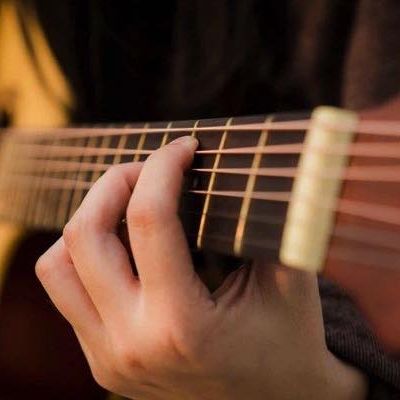The Most Versatile Guitar Etude

Éstudios Sencillos No. 6, by Leo Brouwer. Translated to English, this is Simple Study No. 6, but don’t be fooled. The title doesn’t mean this piece easy. The main lesson to be gathered from this piece is finger preparation of the fretting hand. This piece is so amazing because once the notes are mastered, it becomes a classical guitarist’s playground and is a beautiful repertoire piece.
Before I get into why this piece is so amazing for guitar lessons, let me give some background on the piece and composer. Éstudios Sencillos No. 6 is a part of 20 separate studies all composed by the legendary living composer Leo Brouwer. Brouwer is an influential classical guitar composer having created an oft recorded set of studies. He is known for his modern, avant-garde sound. His contributions to music reach into film and other instruments as well. Leo Brouwer was Cuban born and was influenced heavily by Afro-Cuban rhythms and Son Cubano, a genre of music and dance.
I’ll begin by breaking down the piece to it’s compositional elements. There are two separate sections to this piece, an A and a B section. Each section utilizes a different picking hand arpeggiations that repeat themselves.
The fretting hand moves from one chord to the next with no passage work seen throughout the piece. The majority of the piece has a low A pedal tone, and the high E pedals throughout the whole piece. There are no indicated tempos, phrasing, or dynamics barring a single fermata.
Let’ dig into this piece.
Before we even begin playing the piece, we can have the first two chords already prepared! This allows us to make the first four bars simpler—pun intended—by allowing us to purely focus on the picking hand arpeggiation. To do this we place the 4th finger on the A of the 4th string (7th fret), and the 2nd finger on the G of the same string (5th fret). The 3rd and 1st finger go on the C# of the 3rd string and the D# of the 2nd string respectively.
Now once we begin playing, the only thing we have to worry about during the transition between the second and third bar (example below) is raising the 4th finger off the string. Advanced bonus round, try holding the A on the 4th string until the moment before the G needs to be played instead of letting it off once the 3rd bar starts.
The second form of finger prep we learn is to keep a finger on a string between chord shifts when possible. For example, between the 4th and 5th bar, the second finger can stay on the string and merely slide down a fret to the F#. Between the 6th and 7th bars, all fingers are able to stay on the strings and slide down another fret. Every transition in the piece allows for the guitarist to employ one of these two forms of finger preparation.
Once this piece is memorized, the possibilities in how you play it are nearly endless since Brouwer has no indicated phrasing, dynamics, or tempo. For example, the piece can be just as easily used as a speed study in picking hand arpeggiation as it can for practicing rubato.
I like to use it as an exercise in dynamics control, starting at a pianissimo, crescendoing as smooth as possible to a fortissimo at the B section, then finally decrescendoing back to a pianissimo by the end of the piece. In layman’s terms, starting as quiet as possible, to as loud as possible, then back to as quiet as possible. Perhaps the opposite might sound interesting.
Taking into account Brouwer’s cuban origins, accenting any notes on the 6th, 5th, 4th, and 1st strings, you’d get a sense of some Afro-Cuban rhythms that are hidden within the composition. This would be beneficial to guitarists aiming to level up their dynamic control. Another interesting take on this is playing the pedal tones quieter and emphasizing the rest.
Don’t forget about the tonal possibilities. Since this piece has us doing the same thing with our picking hand over and over. This is a great opportunity to practice moving our hand to create different colors such as tasto or ponticello. Remember to have fun with it!